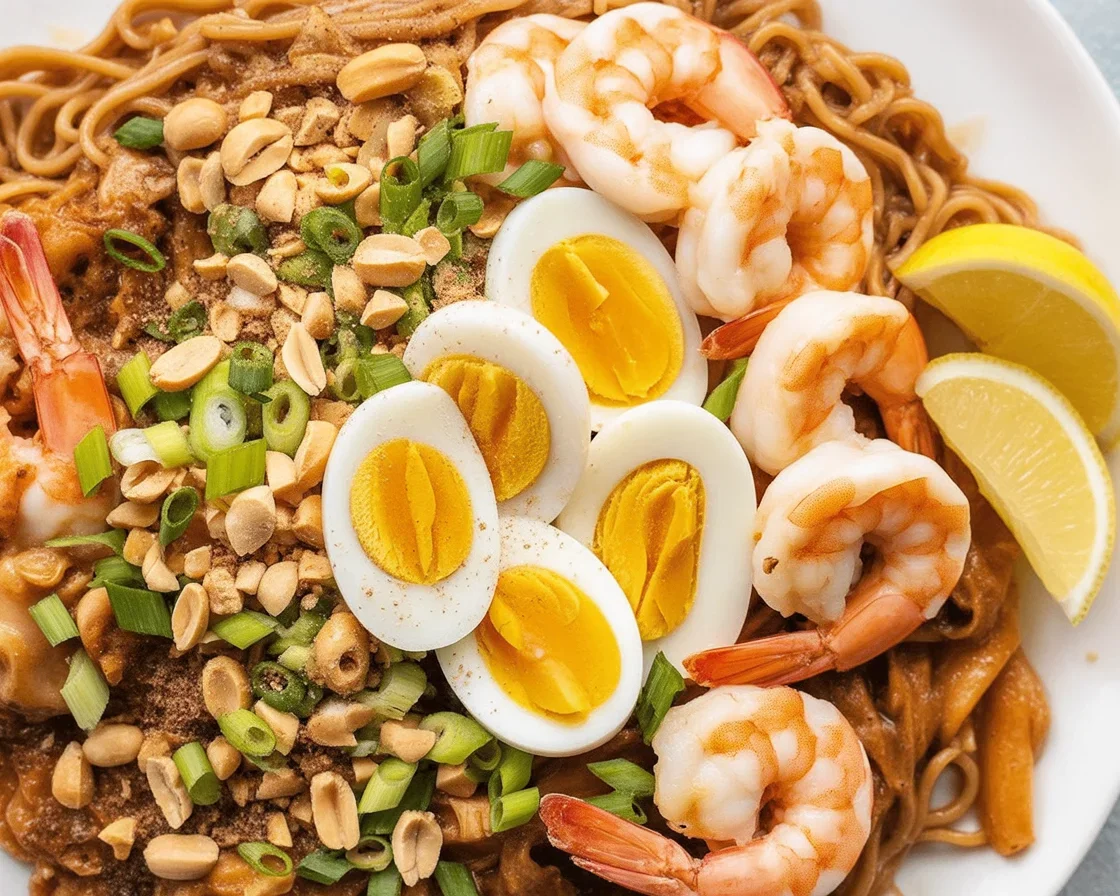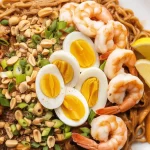Ugh, you know those days where you’re scratching your head about what to make for merienda or even just a quick dinner? Filipino pancit luglug comes to my rescue every single time! If you’re like me and get random cravings for bold, slurpable noodles, this is that “drop everything and cook this” moment. Pancit luglug is super comforting but still feels like a five-star restaurant treat, not kidding. Want more family-friendly ideas? You may wanna peek at these kid-friendly Filipino recipes or, while we’re at it, check some wild adobo variations for your next cooking experiment. 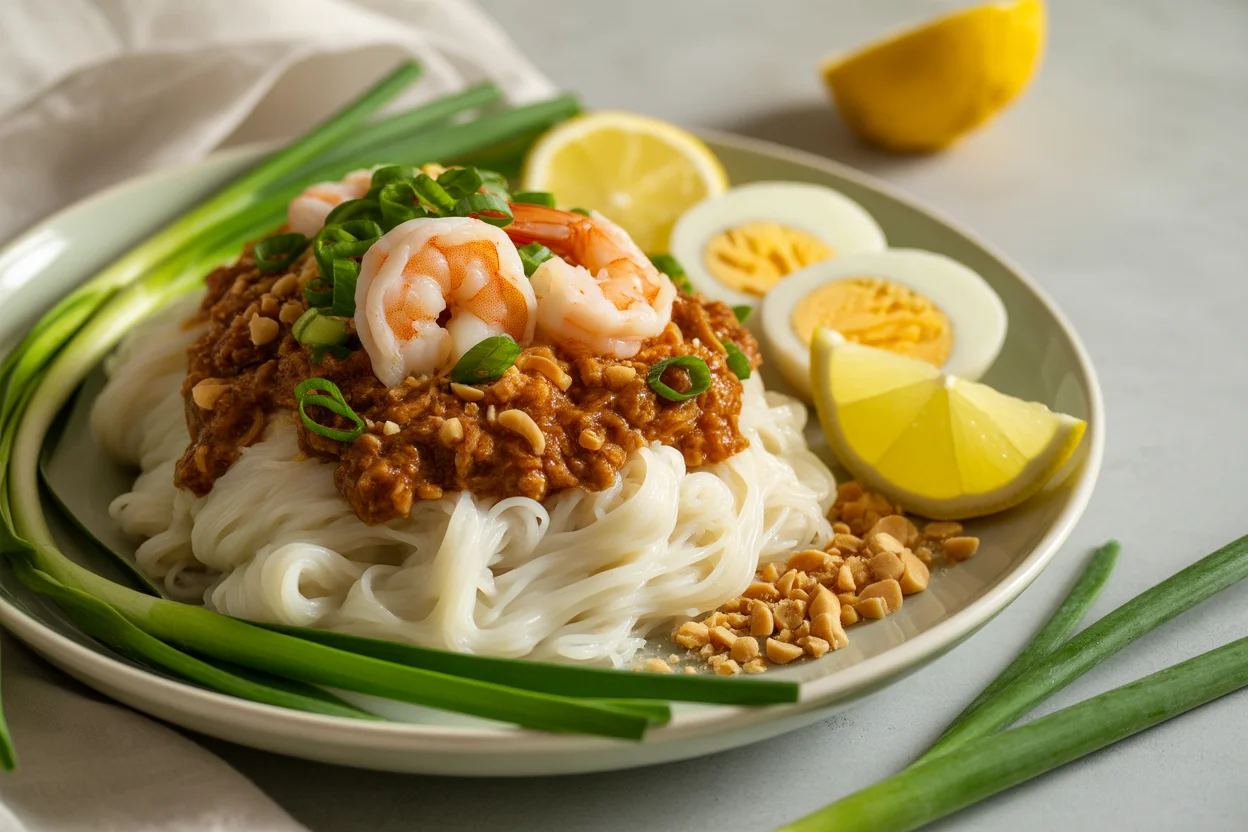
What is pancit luglug?
Filipino pancit luglug is basically a rich noodle dish smothered in a crazy savory shrimp sauce and topped with everything delicious (okay, almost everything). It’s kinda like the close cousin of palabok. The difference? Pancit luglug uses thicker rice noodles and the sauce is more “hearty” if you know what I mean—like it swaps lightness for full-on flavor. I always think of fiestas, crowded kitchens, and those random afternoons at tita’s house whenever I see pancit luglug. Maybe you’ve had it at a carinderia or got some as take-out in a paper box!
You get that springy rice noodle bite, the punch of shrimp, a hint of smoky fish flakes, hard boiled eggs, and crunchy chicharrón. The whole thing just screams all-out comfort. One friend once told me, “If you’re gonna eat pancit luglug, go big or go home,” and honestly, I haven’t recovered from that wisdom since.
“I tried making pancit luglug for the first time after a friend’s suggestion… couldn’t believe how easy and satisfying it was. The sauce alone—whoa. My picky eater kids even went back for seconds!” — Letty B.
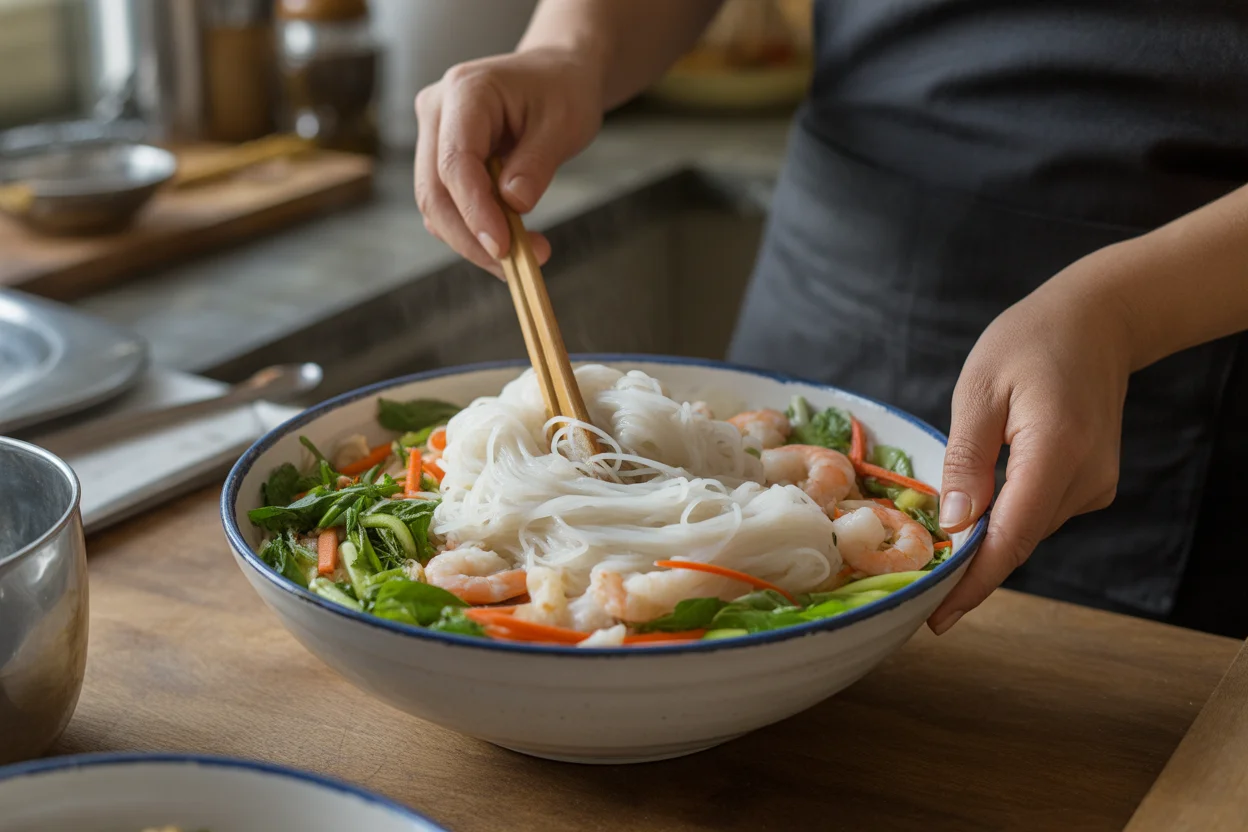
Preparing noodles
Here’s where you start. Don’t make the mistake of grabbing the wrong noodles—use those thick, round rice noodles (sometimes called “bihon luglug”). The goal is a slightly chewy, not-mushy bite. No one likes soggy noodles, right?
I soak mine in hot water for about 10-15 minutes (or honestly, until I remember them again while prepping the sauce). After a soak, toss those noodles in boiling water for a few minutes until they’re tender but not falling apart. Drain fast. If you let them sit, you’ll get a sad clump. Very important: run them under cold water for thirty seconds to stop the cooking.
Straining these noodles looks a little clumsy—don’t stress. Their stubby shape is perfect for catching sauce. You’ll see why soon. 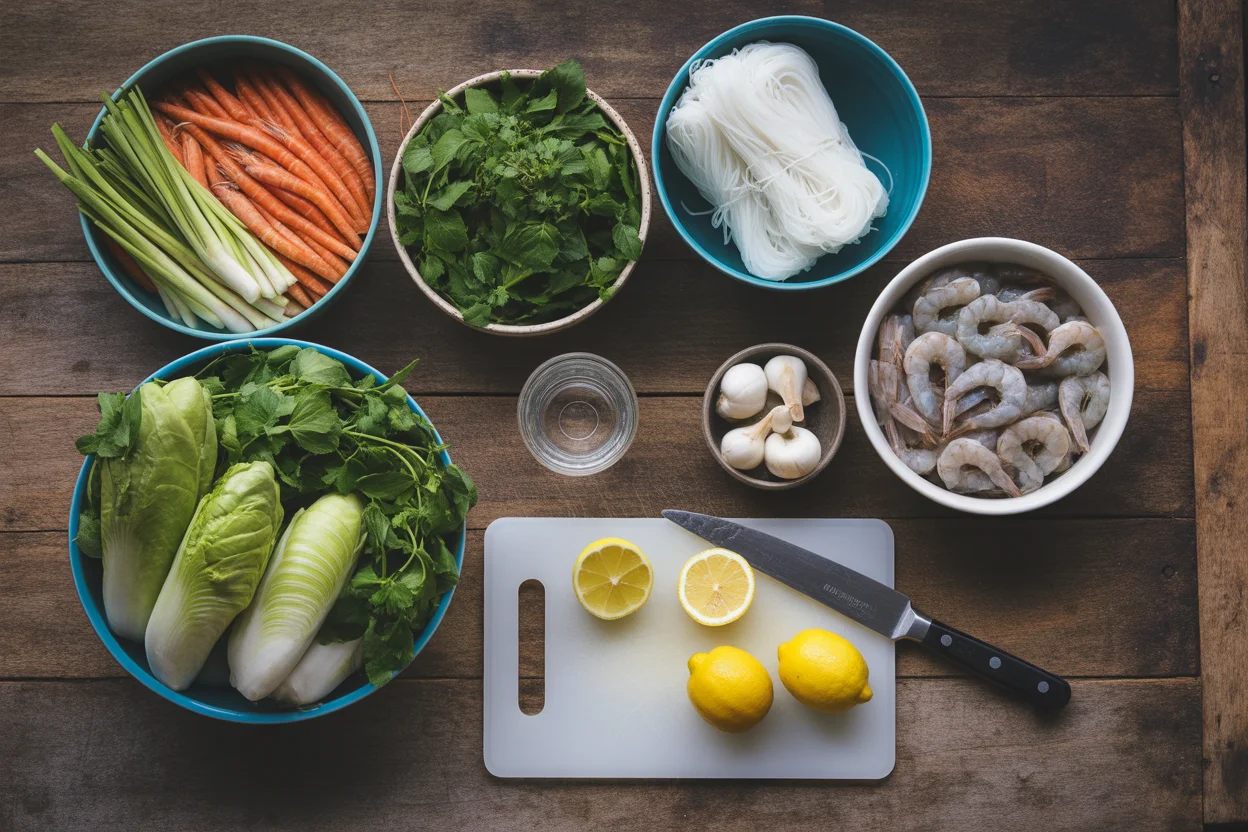
Cooking shrimp sauce
Here’s the thing. Pancit luglug’s magic is in the shrimp sauce. And, sure, you could cheat with store-bought, but homemade is way tastier. I start with shrimp heads and shells, boiling them with garlic and onion until the broth turns this unbeatable reddish gold.
Take out the solids, then thicken that broth by mixing in achuete (that’s annatto for color), a bit of cornstarch, and pre-cooked ground pork if you want it extra filling. Season well—shrimp paste and fish sauce add the classic punch. The sauce should coat a spoon and leave a trail, you know?
It smells so good there’s a real chance you’ll want to eat the sauce straight from the pot. No judgment here.
Adding toppings
Here’s where you let loose. Pancit luglug toppings are non-negotiable for the full experience. I lay out everything in little bowls so everyone can scoop what they want.
You’ll need:
- Chopped cooked shrimp for that extra pop
- Crushed chicharrón or bagnet for unbeatable crunch
- Slices of hard-boiled egg for richness
- Minced green onions for color and zip
Optional but epic? Tinapa flakes (smoked fish). Sprinkle on calamansi and you’re golden. Don’t skip the fresh garlic bits—if you like a punchy bite like I do.
Serving hot
Pancit luglug just doesn’t hit quite right unless it’s warm. The sauce clings best on fresh, steaming noodles.
When you’re ready, ladle heaps of sauce over the noodles, pile on every topping your heart desires, and serve it up fast before it cools. If you have leftovers, keep the components separate. Sauce in a jar, noodles in a container. Trust me, no one wants sad, soggy noodles the next day.
Some quick ideas if you wanna mix things up:
- Serve with extra calamansi for “zing”
- Pair with fried Filipino pork BBQ on the side
- Finish with a spoonful of crispy garlic for a bonus burst
Flavor variations
Not in the mood for shrimp today? I’ve seen folks make pancit luglug vegetarian by skipping the shrimp and bumping up the umami with mushroom broth and more smoked fish. My Lola also used to toss in sautéed tofu when I was little—not authentic, maybe, but actually not bad.
Other times, I toss in leftover lechon kawali or quick-fried chicken strips just to keep things interesting. Add more chili or hot sauce for a spicier ride. If you want to go old-school, try adding crab fat (aligue)—but oh my, you’ll need a nap after.
Mess around and see what sticks!
Cultural background
Pancit luglug has a pretty deep Filipino food history. It’s a Kapampangan favorite, though you’ll find it all over Luzon, and honestly, it gets served up at fiestas, birthdays, and random potlucks alike. The “luglug” part? Means “to dunk.” The noodles get dunked in boiling water, which sounds simple, but it’s the heart of the dish.
In Filipino culture, noodles mean long life, so this gets cooked for all kinds of family celebrations. It’s cozy, communal food—a centerpiece for laughing, eating, and letting loose with your barkada. Every region (sometimes each family!) has its twist. I bet if you asked five titas, you’d get seven different recipes.
If you wanna dig into even more healthy Filipino cooking, the site’s got a big list of healthy Filipino recipes—don’t forget to swing by. Or if you’re hungry for a savory beef dish, check out the all-time favorite bistek Tagalog, too!
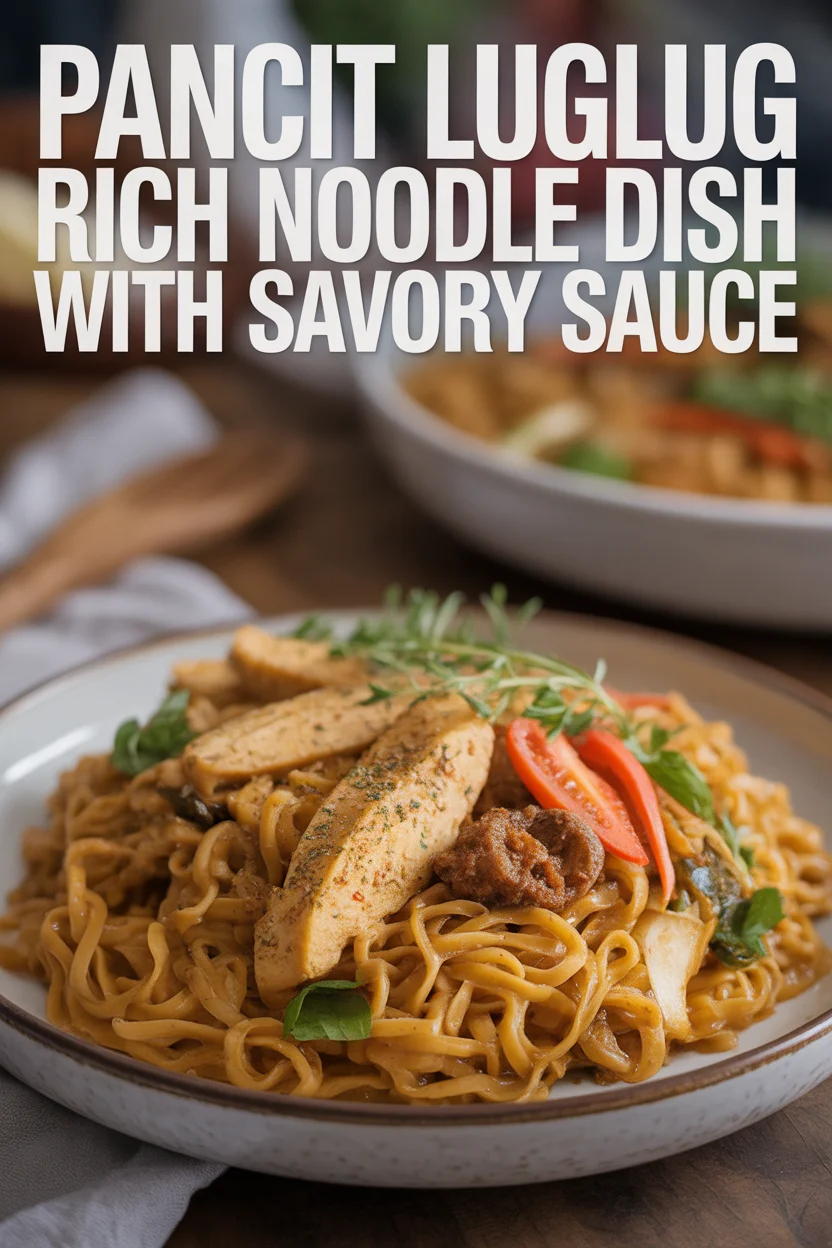
Still curious about pancit luglug, maybe even ready to dive in and cook? There are fantastic, tried-and-true recipes out there, and nothing wrong with glancing at a detailed guide like this Pancit Luglug Recipe to get started. If you want to compare or see a slightly different approach, check Easy Pancit Luglug with Ground Pork. Love exploring noodle cousins? You’ll enjoy reading about Pancit Palabok: Filipino Noodles with Pork & Shrimp for more tips and ideas. Whichever way you go, once you make pancit luglug a few times, you’ll start adding your own weird genius tweaks—and there’s not a thing wrong with that. Enjoy!
Pancit Luglug
Ingredients
Noodles and Base
- 200 grams thick rice noodles (bihon luglug) Soaked in hot water for 10-15 minutes before boiling.
Shrimp Sauce
- 1 cup shrimp heads and shells For making the broth.
- 2 cloves garlic Minced.
- 1 medium onion Chopped.
- 1 tablespoon achuete (annatto) For color.
- 1 tablespoon cornstarch For thickening the sauce.
- 1 tablespoon shrimp paste For seasoning.
- 1 tablespoon fish sauce For seasoning.
- 1/2 cup pre-cooked ground pork Optional for extra filling.
Toppings
- 1 cup chopped cooked shrimp For garnish.
- 1/2 cup crushed chicharrón or bagnet For crunch.
- 4 pieces hard-boiled eggs Sliced.
- 1/4 cup minced green onions For color and flavor.
- optional tinapa flakes (smoked fish) Optional topping.
- to taste calamansi For refreshing zing.
- to taste fresh garlic bits For a punchy bite.
Instructions
Preparation
- Soak thick rice noodles in hot water for 10-15 minutes.
- After soaking, boil noodles for a few minutes until tender but not falling apart.
- Drain the noodles and run them under cold water for 30 seconds to stop the cooking process.
Cooking Shrimp Sauce
- In a pot, boil shrimp heads and shells with minced garlic and chopped onion until the broth turns reddish gold.
- Remove the solids and thicken the broth by mixing in achuete, cornstarch, and ground pork if using.
- Season the sauce with shrimp paste and fish sauce until it coats a spoon.
Assembly
- Ladle heaps of shrimp sauce over the prepared noodles.
- Add generous amounts of all toppings according to your preference.
- Serve immediately while hot to enjoy the full flavor.
